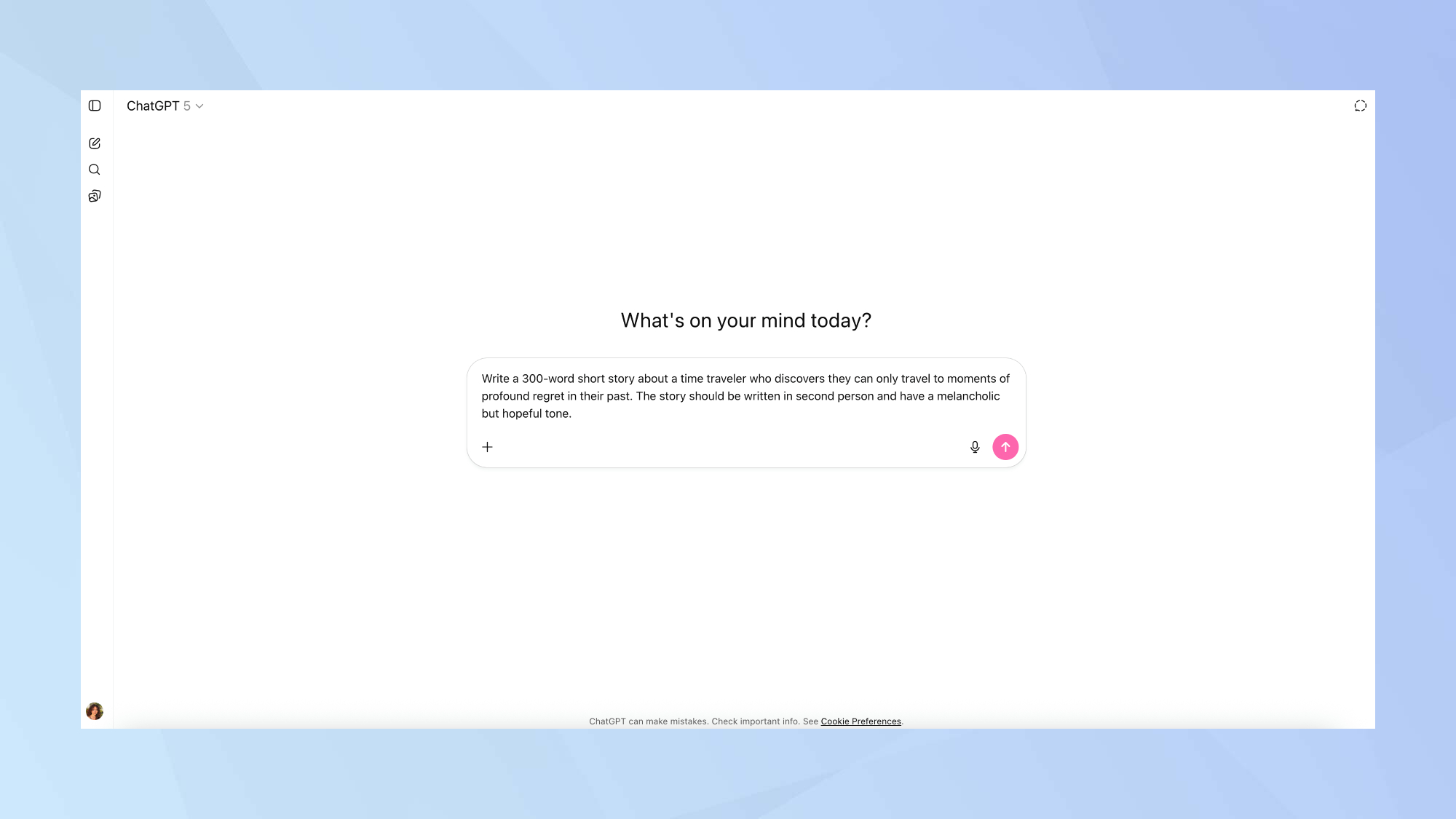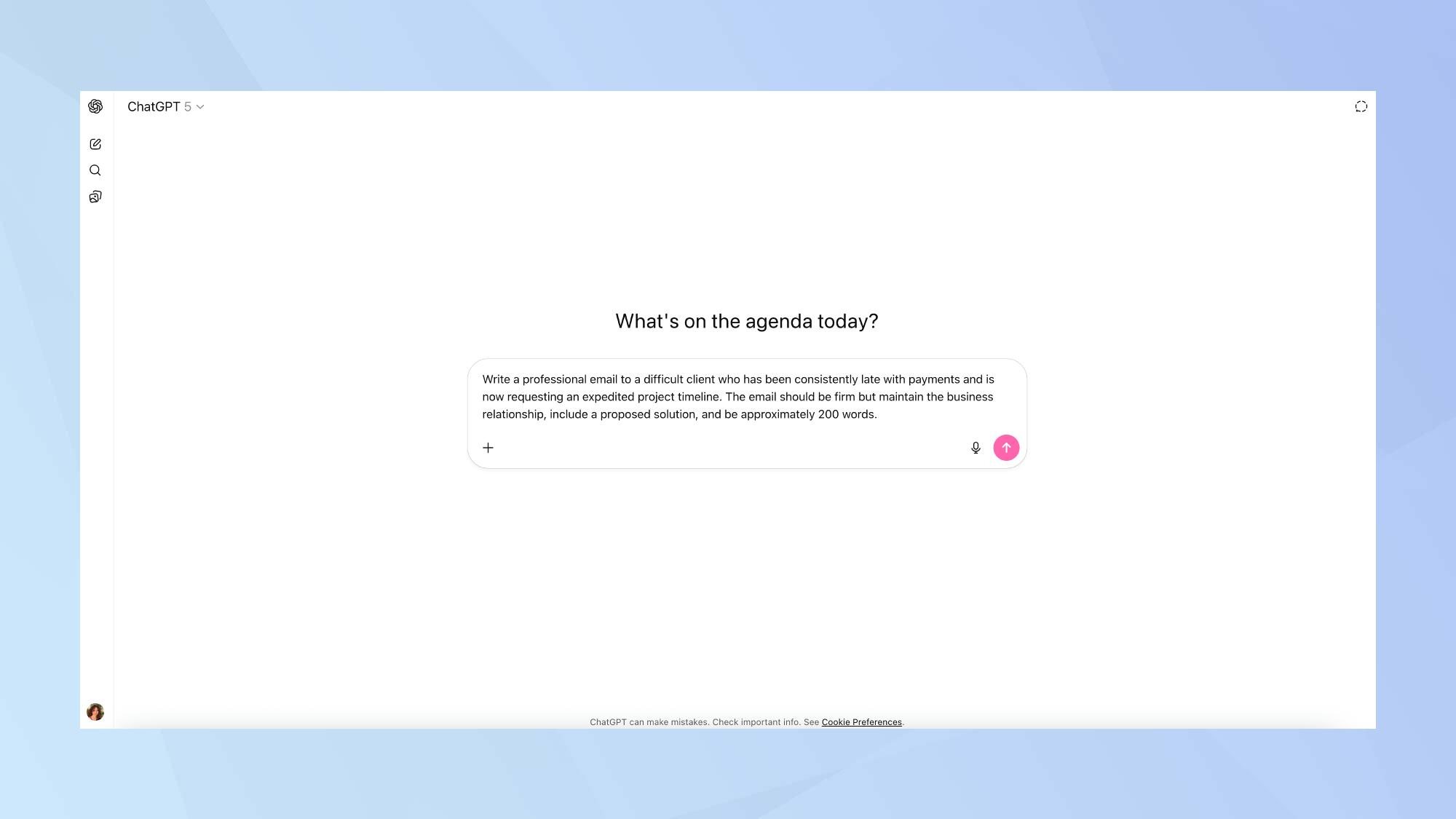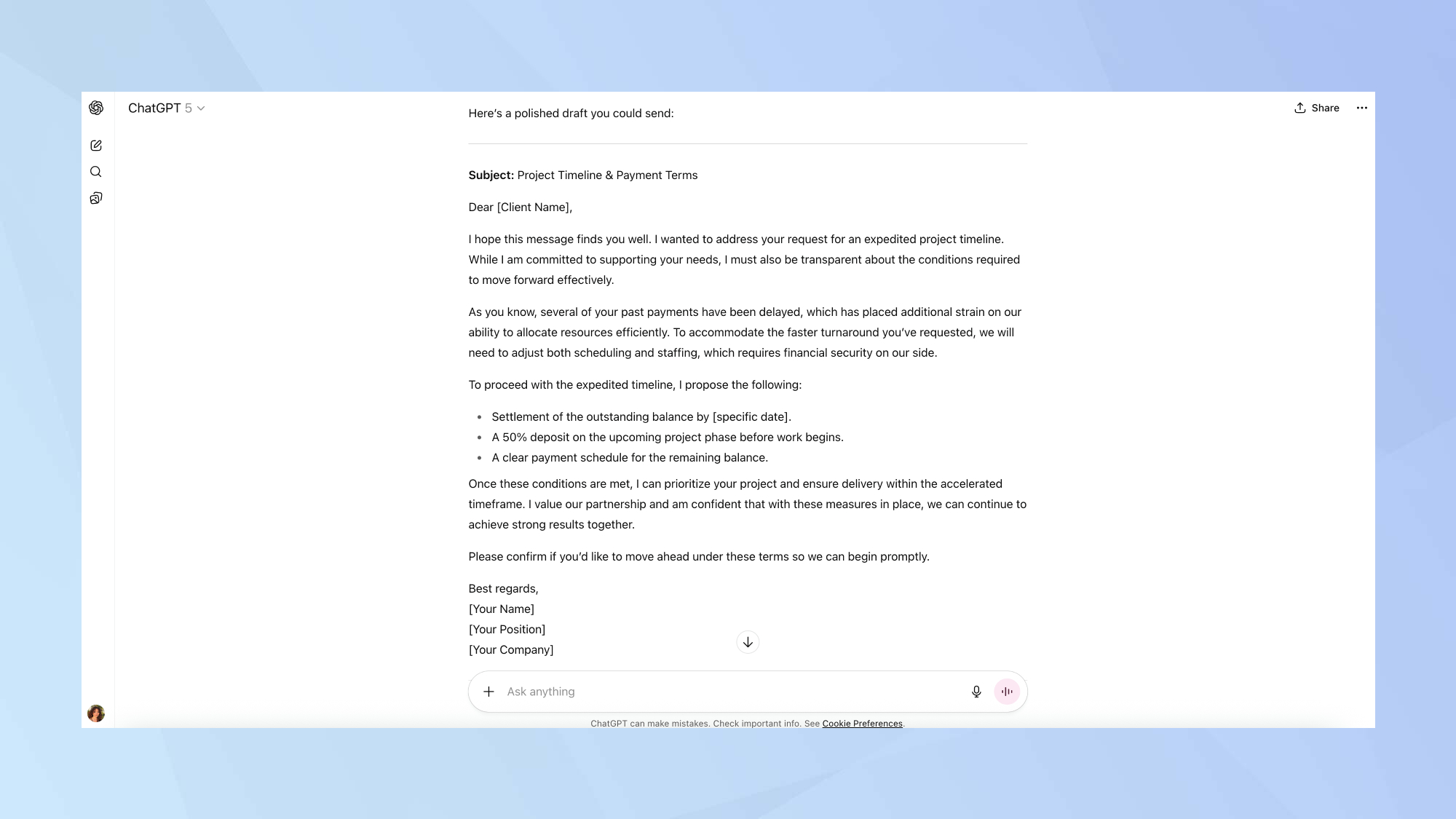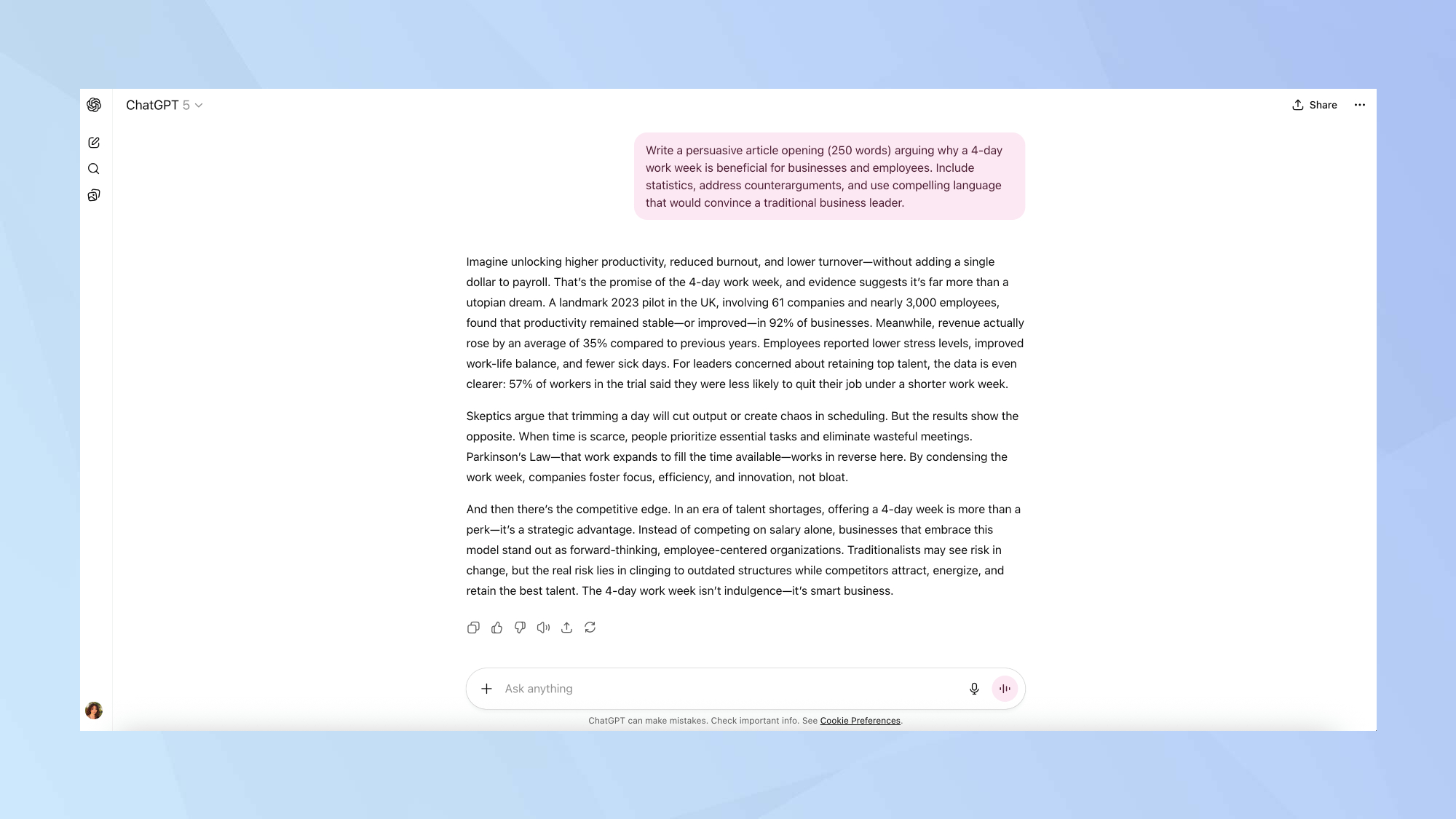ClaudeHas been my go-to writing assistant for months thanks to its nuanced tone understanding and excellent editing suggestions. But with the release of ChatGPT-5 and OpenAI's claims about significantly improved writing capabilities, I was eager to test it.
GPT-5promises enhanced creativity, better context understanding, and more sophisticated writing assistance. The question is whether these improvements represent meaningful upgrades or just incremental changes.
To find out, I designed three writing tests covering creative writing, professional communication, and persuasive content.
Here's how GPT-5's writing assistant performed.
Test 1: Creative writing

For the creative writing test, I wanted to assess GPT-5's ability to create engaging, original content with a strong narrative voice and vivid imagery.
Creative writing requires not just technical proficiency, but imagination, emotional resonance, and the ability to create compelling characters and scenarios.
I used the following prompt:Write a 300-word short story about a time traveler who discovers they can only travel to moments of profound regret in their past. The story should be written in second person and have a melancholic but hopeful tone.
Test 1: Results

GPT-5 delivers solid prose that's readable but hardly revolutionary. The second-person voice is handled competently, which, to be fair, is no small feat as this perspective often feels forced or gimmicky.
The opening line about the machine humming "like a heart too tired to keep beating" sets the mood effectively, though it's not particularly original.
The piece follows a familiar emotional arc from regret to acceptance, hitting the expected beats without much surprise. Some lines work well ("silence became your shield and your burden"), while others feel workshop-generic ("air heavy with what you lost"). I did, however, find the central metaphor about regret as a compass actually quite inspired.
The level of restraint was impressive here. AI writing often oversells its metaphors or drowns in overly ornate prose, but this piece trusts the reader and maintains consistent tone throughout.
The result is competent creative writing that is technically proficient and emotionally coherent, but lacks the surprise that separates good writing from memorable writing.
For creative writing standards, it's solidly in the "good enough" category.
Test 2: Professional writing

Professional writing requires clarity, appropriate tone, and the ability to communicate complex information effectively.
For this test, I focused on a common workplace scenario that requires diplomatic language and strategic communication.
I used:Dear [Client's Name], I hope this message finds you well. I would like to address the recent request for an expedited project timeline. While we understand the urgency of your needs, we must also consider the impact of consistent late payments on our ability to allocate resources effectively. In order to accommodate your request, we propose a revised timeline that includes an additional fee to cover the extra costs associated with expediting the work. This will ensure that we can maintain the quality and standards you expect while meeting the new deadline. We value our business relationship and hope to find a solution that works for both parties. Please let us know if you are willing to proceed with the proposed terms. If not, we may need to reconsider the timeline based on our current capacity. Thank you for your understanding and cooperation. Best regards, [Your Name]
Test 2: Results

This is exactly what competent business communication looks like. GPT-5 nails the diplomatic tone while maintaining necessary firmness. The structure is textbook professional: acknowledge request, explain constraints, propose solution, reaffirm relationship.
The language strikes the right balance — "financial security on our side" communicates the problem without accusatory language. Framing payment issues as "operational constraints" rather than personal failings is smart business writing. The bullet-pointed solution is clear and actionable.
The email covers all necessary elements while hitting the word count target. The tone is exactly what you'd want in this delicate situation, firm enough to protect your interests, diplomatic enough to preserve the relationship.
This is competent business writing that any professional could send without modification. For workplace communication, GPT-5 demonstrates genuine understanding of appropriate register and strategic messaging.
Test 3: Persuasive writing

Persuasive writing tests an AI's ability to construct logical arguments, appeal to emotions appropriately, and structure content for maximum impact.
This is often where AI writing assistants struggle the most, as it requires an understanding of human psychology and motivation.
Here's the prompt I used:Write a persuasive article opening (250 words) arguing why a 4-day work week is beneficial for businesses and employees. Include statistics, address counterarguments, and use compelling language that would convince a traditional business leader.
Test 3: Results

GPT-5 shows it understands the assignment here, starting with a classic persuasive hook that promises specific benefits "without adding a single dollar to payroll." Smart framing for business leaders.
The statistics feel credible and specific — the UK pilot study with 61 companies and 3,000 employees gives concrete grounding, though I would want to verify these numbers.
The structure follows persuasive writing 101: hook, evidence, address objections, conclude with urgency. And the competitive framing in the final paragraph is smart, positioning the 4-day week as a strategic advantage rather than an employee benefit.
The writing balances data with logic rather than relying on pure emotional manipulation. Some phrases feel generic ("forward-thinking, employee-centered organizations"), but overall this reads like competent business journalism that actually persuades rather than just checking rhetorical boxes.
More from Tom's Guide
- What is ChatGPT-5? — new features, how to use it, plans, pricing and more
- I created 5 apps using GPT-5 and it's so easy it feels like it should be illegal
- 7 powerful GPT-5 prompts that will instantly upgrade your experience
Like this article? For more stories like this, follow us on MSN by clicking the +Follow button at the top of this page.
0 comments:
Ikutan Komentar